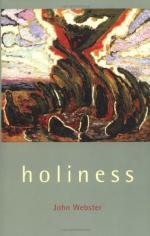|
This section contains 2,281 words (approx. 8 pages at 300 words per page) |

|
SOURCE: "The Case of John Webster," in Scrutiny, Vol. XVI, No. 1, March, 1949, pp. 38-43.
In the excerpt below, Jack maintains that there is no correspondence between the moral axioms of "degree"—the hierarchical ordering of nature and society—and the Machiavellian life presented in Webster's drama. This disassociation, the critic maintains, is the dramatist's fundamental flaw.
Distintegration characterizes the view of life which inspired Webster's best-known plays. It is perfectly true, as Dr. Tillyard remarks [in The Elizabethan World Picture], that Webster, like the rest of his age, inherited 'the Elizabethan world-picture'; but in his work we see that world-picture falling in ruins. When Dr. Tillyard goes on to say that Webster's characters belong 'to a world of violent crime and violent change, of sin, blood and repentance, yet to a world loyal to a theological scheme', and adds: 'indeed all the violence of Elizabethan drama has nothing...
|
This section contains 2,281 words (approx. 8 pages at 300 words per page) |

|


